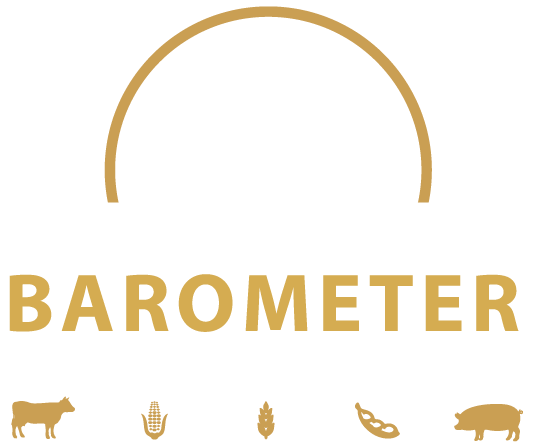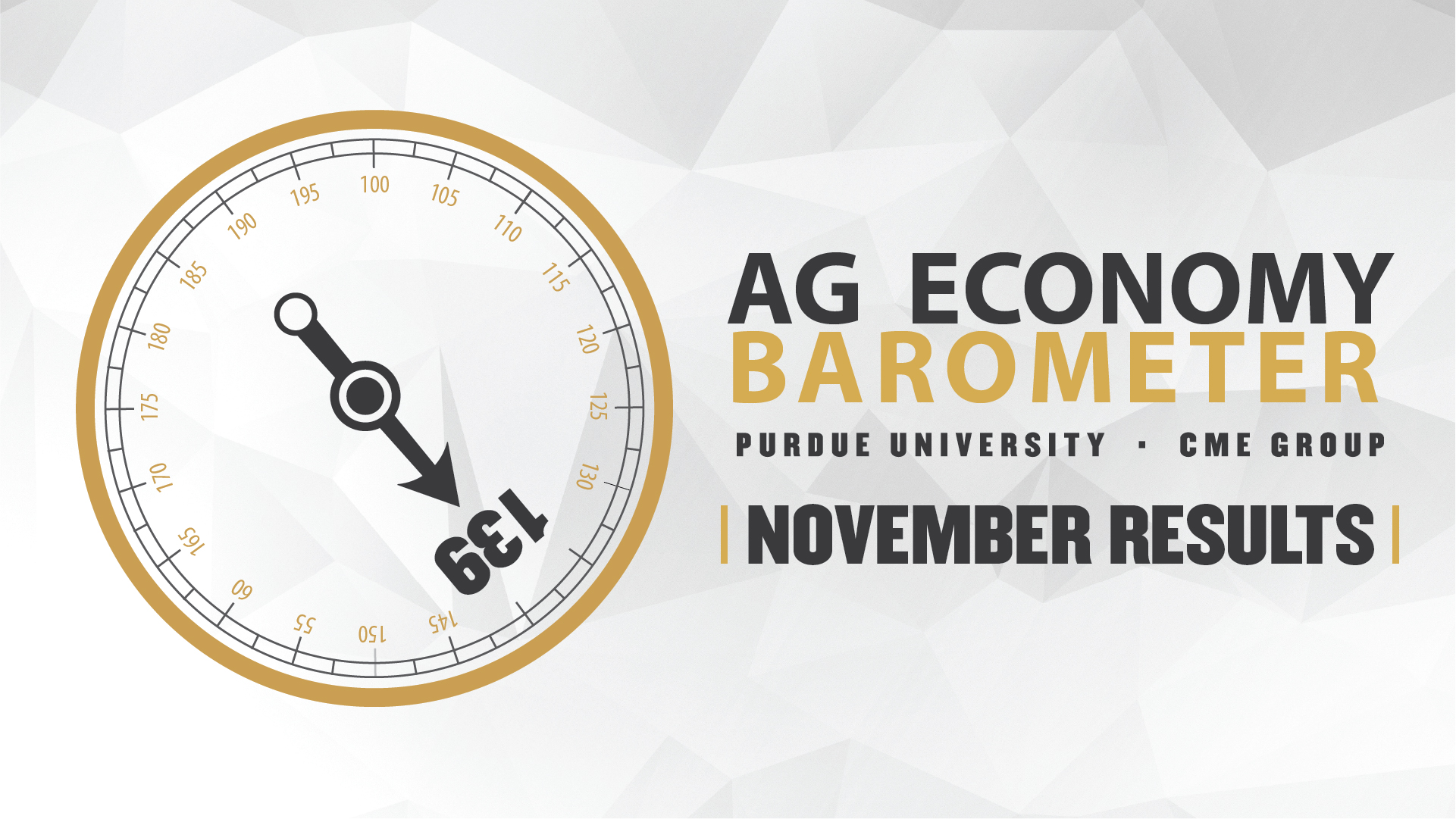About the Ag Economy Barometer
The Purdue University/CME Group Ag Economy Barometer is a nationwide measure of the health of the U.S. agricultural economy. On the first Tuesday of each month, the Ag Economy Barometer provides a sense of the agricultural economy’s health with an index value. The index is based on a survey of 400 agricultural producers on economic sentiment each month. Quarterly, the index is accompanied by an in-depth survey of 100 agriculture and agribusiness thought leaders.
As CME Group’s roots are in agriculture, and Purdue University’s Center for Commercial Agriculture has a long history of producing cutting-edge agricultural research, this partnership is designed to create a new and important tool for producers, economists, traders, finance industry professionals and journalists who are interested in understanding the agriculture industry and the broader global economy.
Find the Ag Economy Barometer on the Bloomberg Terminal: AGECBARO, AGECCURC and AGECFTEX.
February’s Ag Economy Barometer changed very little compared to January, down 2 points to a reading of 165. Ongoing strength in ag commodity prices and farm income continue to support producers’ perspective on current conditions while concerns about possible policy changes affecting agriculture and eroding confidence in future growth in ag trade continue to weigh on producers’ future expectations.
Read the Full ReportThe Ag Economy Barometer drifted lower in January to a reading of 167, a decline of 7 points compared to December and equal to the index’s November reading. The barometer’s decline over the last three months is all attributable to weaker expectations for the future as the Index of Future Expectations has fallen 35 points.
Read the Full ReportFarmer sentiment improved modestly in December as the Ag Economy Barometer rose to a reading of 174, up 7 points from November. Both of the barometer’s sub-indices, the Index of Current Conditions and the Index of Future Expectations, were higher in December than in November although the current conditions improvement was three-times the size of the future expectations increase.
Read the Full ReportAgriTalk
AgriTalk
AgriTalk
Brownfield, by Erin Anderson
Hoosier Ag Today, by C.J. Miller
AgriTalk








